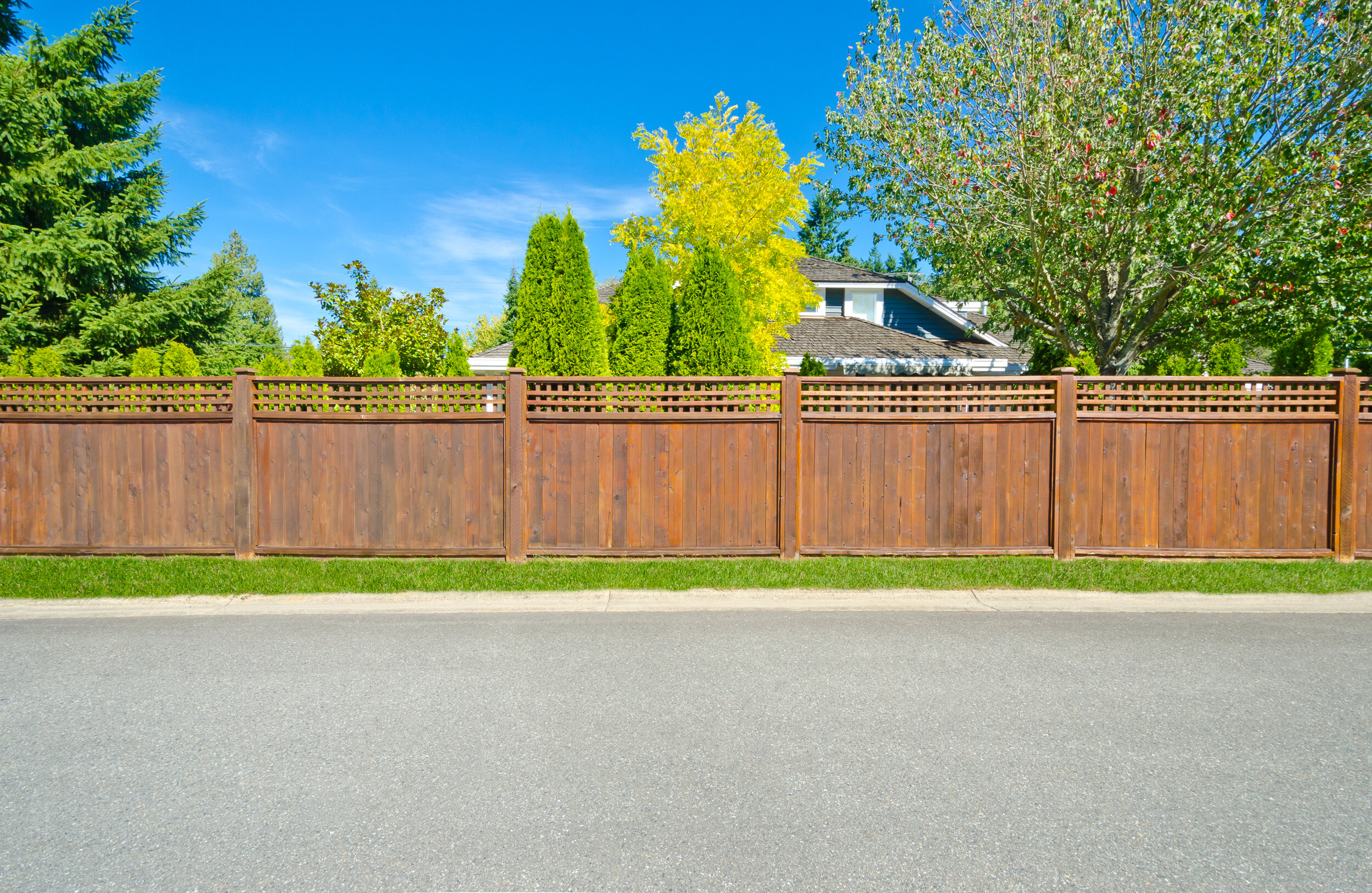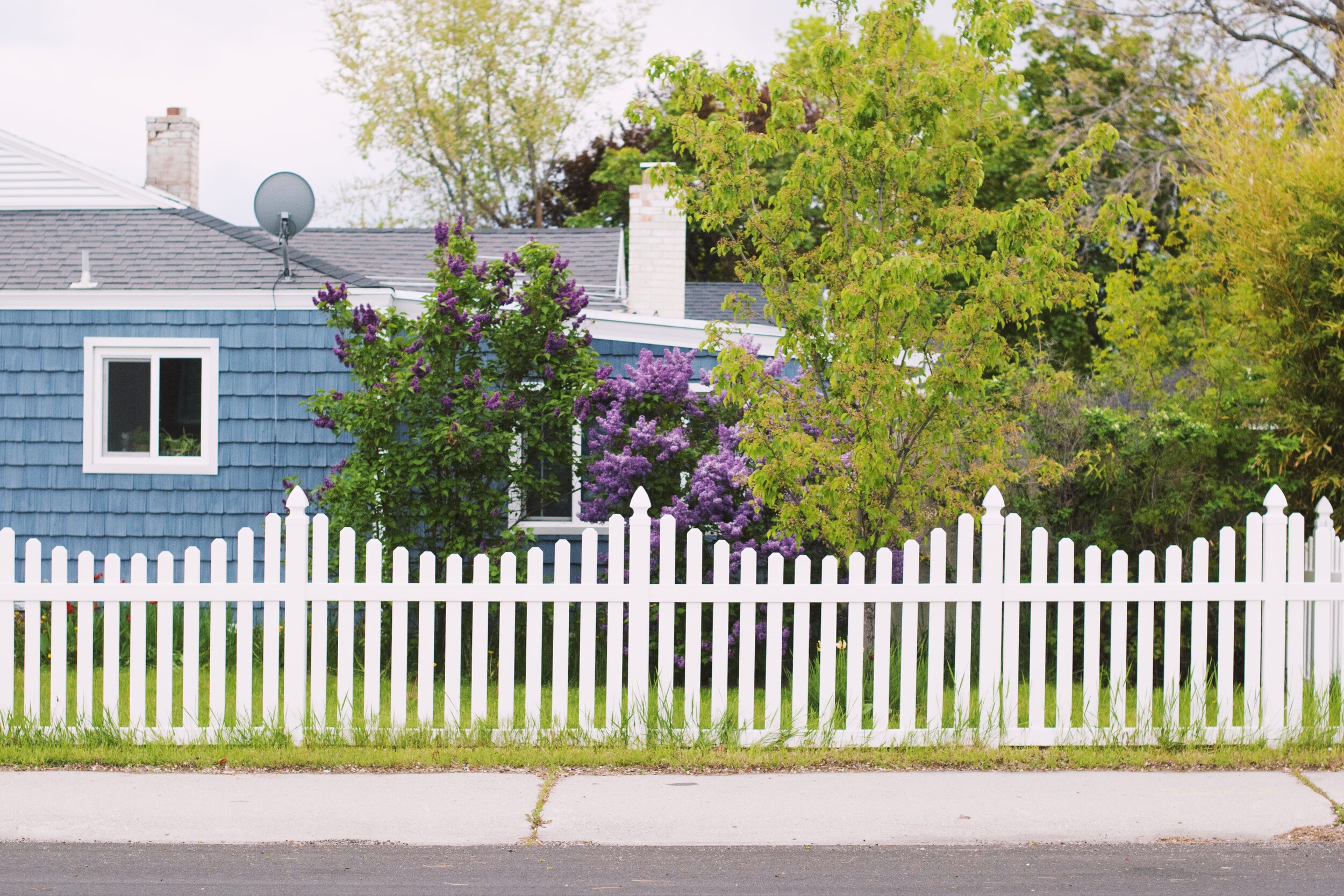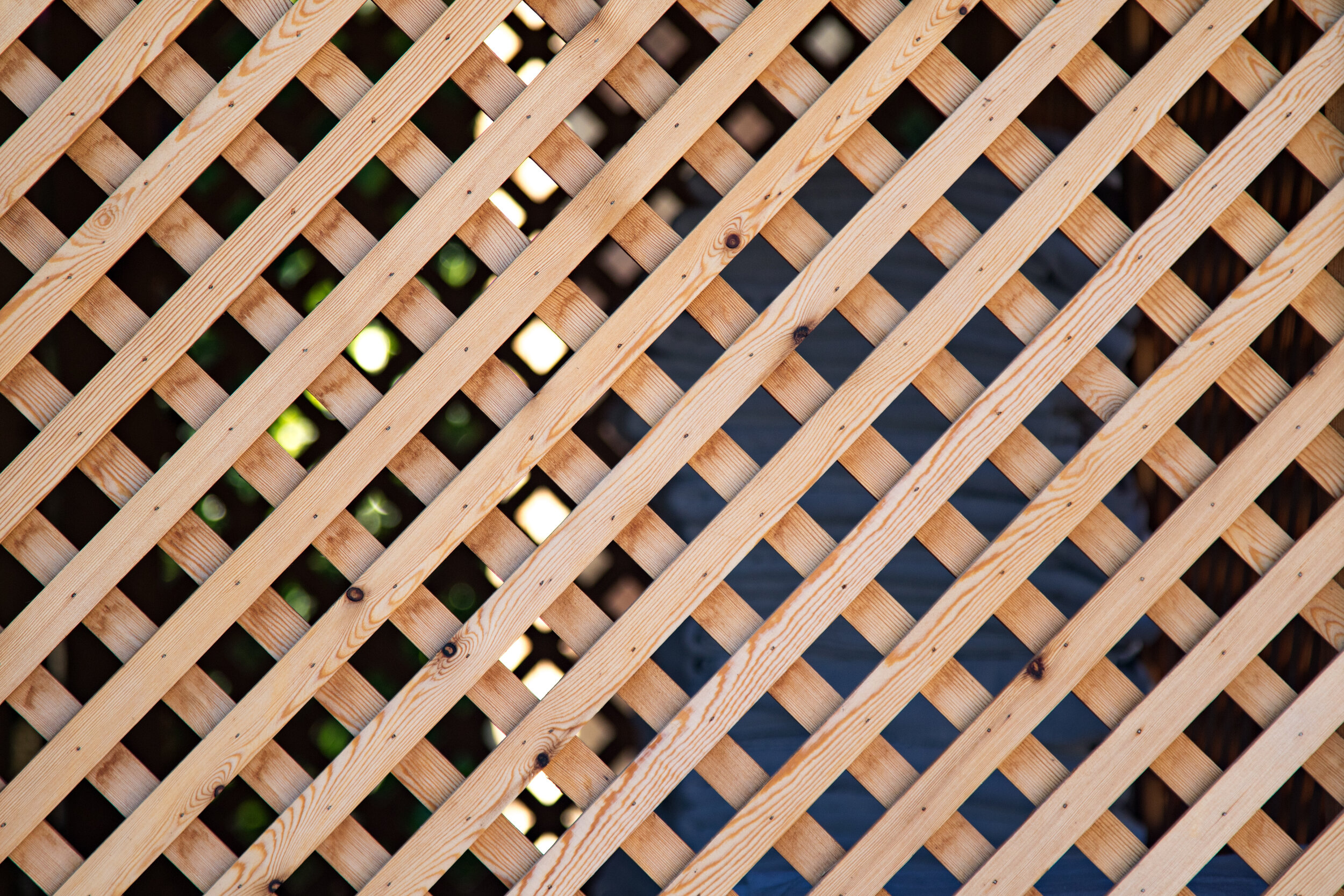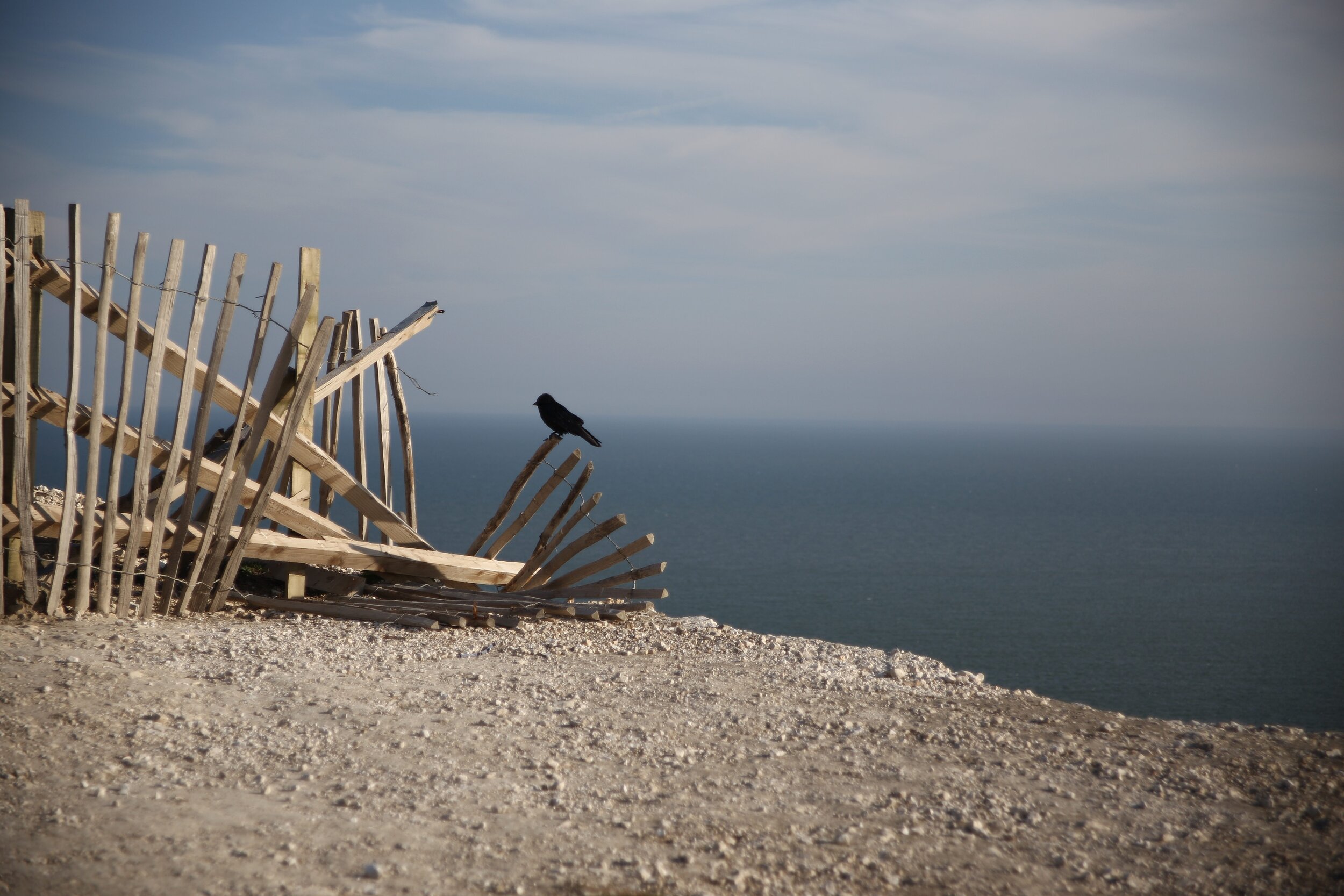3 Things You Should Know Before Installing a Wood Fence
/WOOD FENCE
DISCLAIMER: AS AN AMAZON ASSOCIATE I EARN FROM QUALIFYING PURCHASES. THERE ARE AFFILIATE LINKS IN THIS POST. THIS MEANS THAT AT NO COST TO YOU, I WILL RECEIVE A COMMISSION IF YOU PURCHASE THROUGH MY LINK. I WILL ONLY EVER PROMOTE THE PRODUCTS AND SERVICES THAT I TRUST AND 100% RECOMMEND. YOU MAY READ MY FULL DISCLOSURE POLICY FOR MORE INFORMATION. THANK YOU FOR SUPPORTING MY BUSINESS IN THIS WAY.
For years, wood fences have been a popular choice for American homeowners. From the very first wooden picket fences that were erected around colonial homes, to the suburbs of many cities today, wood continues to be one of the most common materials used in fencing.
Here are the three most important things to know before you choose a wood fence for your home.
1. Know What Kind of Wood is Best for Fences
According to the American Fence Association, approximately 80% of fences in the United States are constructed using pressure treated pine or Western red cedar. Here’s a breakdown of some of the most common types of woods used in fences.
Western Red Cedar
This type of wood is beloved for its naturally attractive look. It’s not quite as affordable as certain types of pine and spruce, but the price tag is worth it due to the aesthetic appeal and longevity of the wood.
It is durable, rot-resistant, and rarely susceptible to warping. Cedar also has a nice, subtle scent that makes it an especially appealing choice for outdoors.
Southern Yellow Pine
Affordable and strong, this is one of the best wood types for homeowners on a budget. When properly pressure-treated, it is insect and rot-resistant.
Redwood
Redwood has a similar price tag to cedar. Valued for its longevity, it’s highly durable and sap-free.
Cypress
Cypress is a stable, popular wood with small knots. It’s highly insect-resistant, and it’s in a similar price range to redwood and cedar.
Douglas Fir
Douglas fir is technically a softwood, but it’s known for being harder than many types of woods — even other hardwoods like chestnut. The main downside is that it is not as resistant to rot as redwood or red cedar.
Whitewood
This does not refer to a particular wood species. Instead, it’s a label used to refer to three inexpensive softwoods: pine, spruce, and fir. If you’re on a strict budget, whitewoods can be a good choice. However, they must be treated, otherwise the lifespan of the wood will be drastically shortened.
2. Know Your Wood Fence Styles
Not all wood fences are created equal. There are many different styles to choose from, depending on your design preference and functional needs.
Picket Fence
According to the American Fence Association, picket fences are still the most common type of wood fencing used by homeowners today. They’re great for surrounding gardens and front yards.
Privacy Fence
Taller and sturdier than picket fences, privacy fences are capable of providing extra security and safety. Properly installed, they can aid in noise reduction. In certain situations, they may even be required by state or local building codes, such as around a swimming pool.
Post and Rail Fence
Reminiscent of farm fencing, the simple post-and-rail fence adds rural charm to any yard. It’s good for marking property lines on large pieces of land, keeping in animals and livestock, or surrounding a garden.
Lattice Fence
This decorative fence is a great alternative to a privacy fence. The crisscrossing panels provide more coverage than a picket or post-and-rail fence, but the gaps between the boards let light into your yard.
Many homeowners pair their lattice fence with flowering vines and plants for extra decorative appeal. This is a good fence for patios, porches, garden enclosures, and ornamental landscaping.
Wood Fence Gate Ideas
Not all fences need to have a gate. But, if you choose to install one, make sure to do your research. Gates are the one part of the fence that will be susceptible to regular wear-and-tear from people opening and closing it. Because of this, it’s important not to skimp on materials for the gate.
If your fence surrounds a pool, your county may require you to have a self-closing gate. If you’re building the fence and gate yourself, use your most attractive boards for the gate, because this is where the eye will naturally be drawn.
Make sure to purchase a gate latch that is specially made for wood fencing. Wood tends to expand and shrink with the weather, and so a regular door latch won’t work.
3. Know How to Care For Your Wood Fence
It’s important to periodically clean your fence and keep up with regular maintenance. When properly installed, treated, and cared for, your wood fence should last for a couple of decades.
Follow these tips to keep your fence in the best condition.
Treat Your Wood
Many woods come with a 10-year warranty. Check with your fence company or contractor on the warranty of the woods you are interested in.
To extend the life of your wood, consider treating it with a water-repellent coating to protect against warping and insect damage. Depending on your location and climate, you may also want to treat your wood with a weatherproof solution to keep the fence safe from temperature swings and moisture.
Finally, look for a wood finish that will seal the wood against exterior elements, as this will preserve the wood over time.
Perform Regular Maintenance
If you finished your wood with a waterproofing solution or a clear toner, you’ll need to touch it up every year. If your wood is stained, you should touch it up or replace the stain every 3-5 years.
You should also visually inspect your fence on an annual basis. Look for broken pieces, nails or screws that have fallen out, leaning posts, or any signs of rot or insect damage. Use wood filler to fix up small blemishes, and tune-up your gate lock and hinges with a lubricant, if needed.
Make sure your gutters aren’t draining onto the fence, and move sprinklers far enough away so they don’t moisten the wood. Make sure there are no areas of standing water around your posts. Check plants, shrubs, and trees for overgrowth that may be weighing on the fence or dripping moisture.
Should I Power Wash My Wood Fence?
If your wood fence is coated in dirt and grime, it may be in need of a deeper cleaning. You will need to be careful when using a power or pressure washer, though, because both methods can damage the wood. Choose a power washer with a low PSI — ideally lower than 2,000 PSI.
In the past, wood was susceptible to rotting, warping, and disintegrating due to poor weather conditions. Today, we have treatments that make it easier to protect wood, keeping it in excellent shape for years. There’s perhaps no better time to install a beautiful, long-lasting wood fence for your yard.
Brandon Hubbard, AIA, NCARB, LEED AP BD+C









